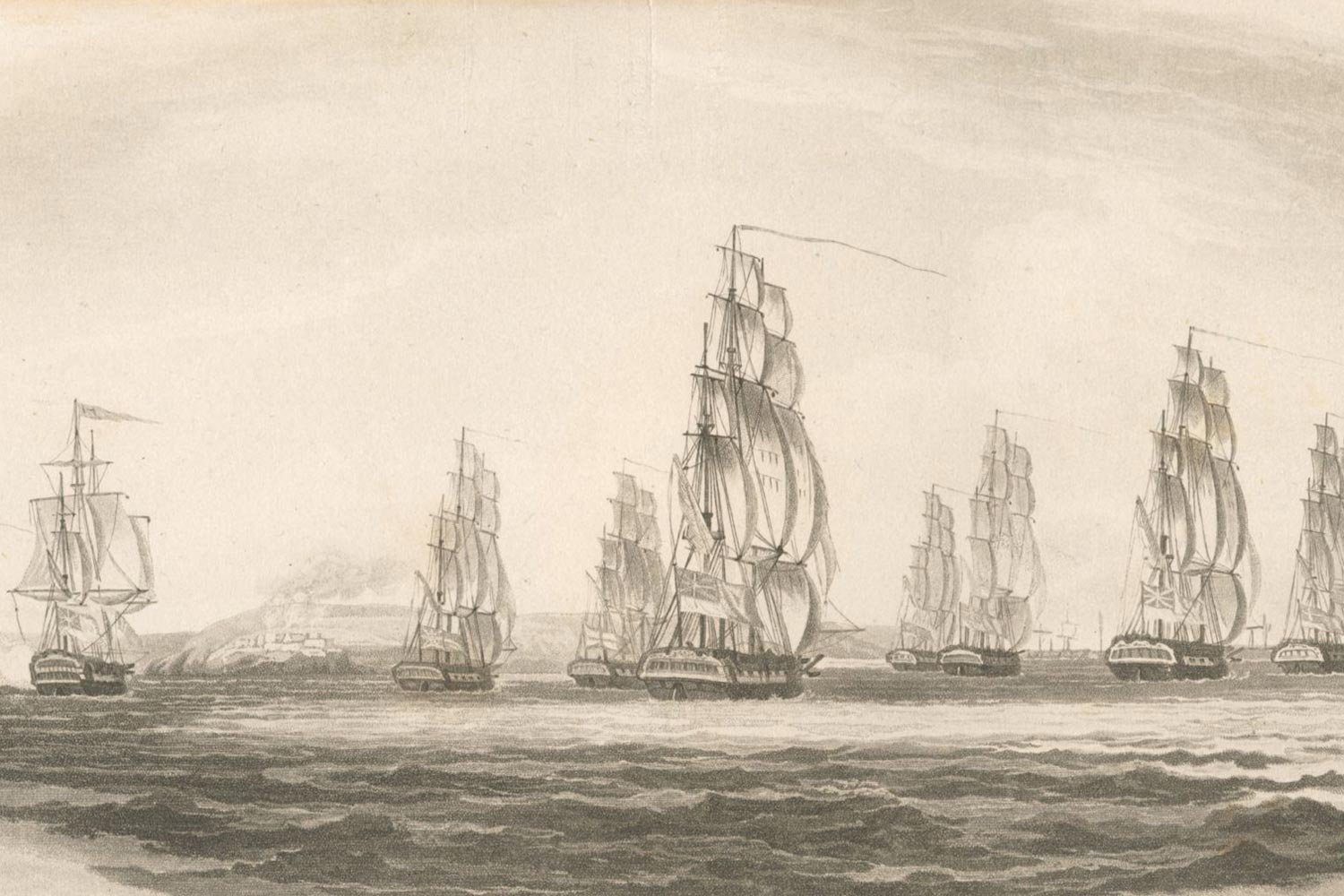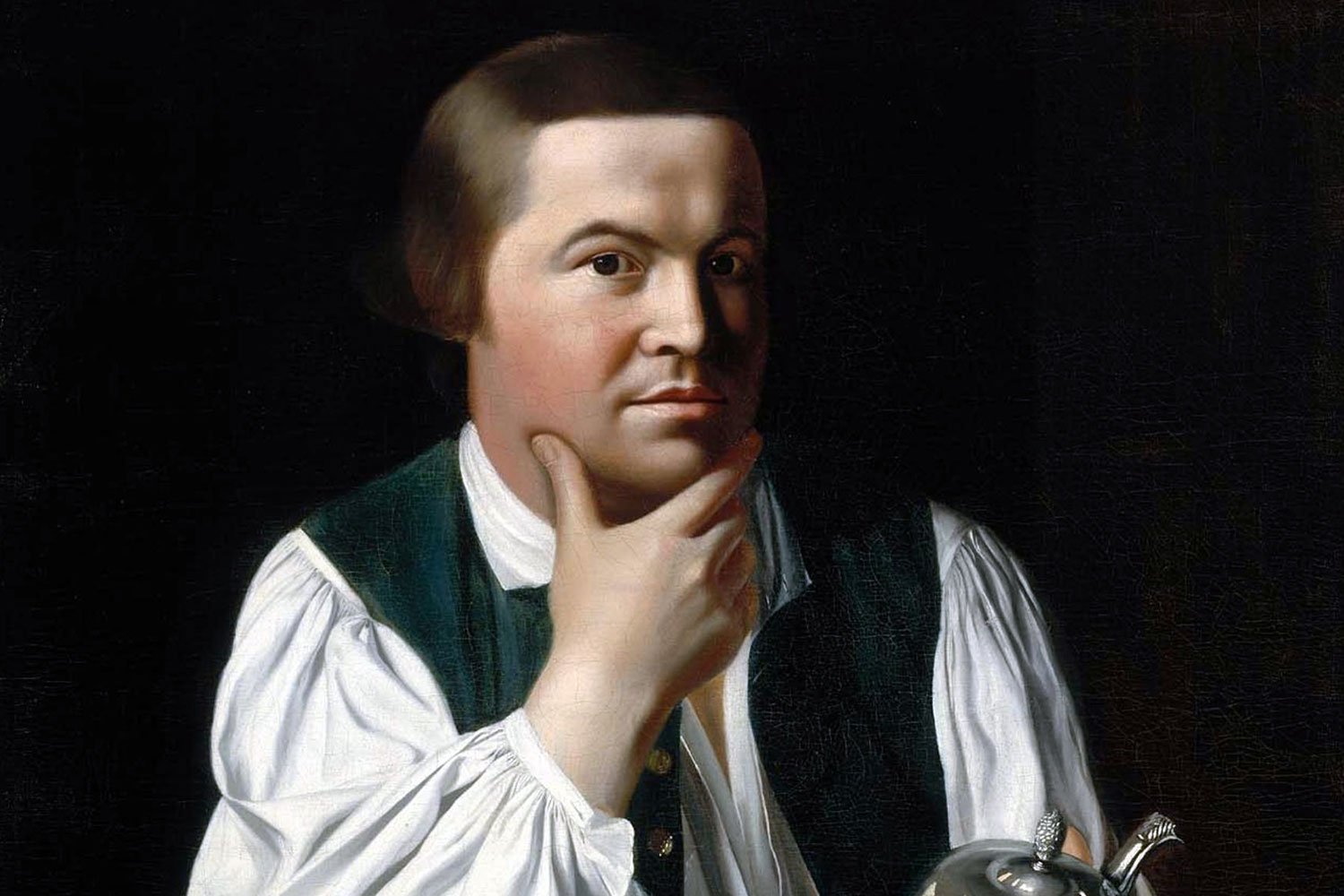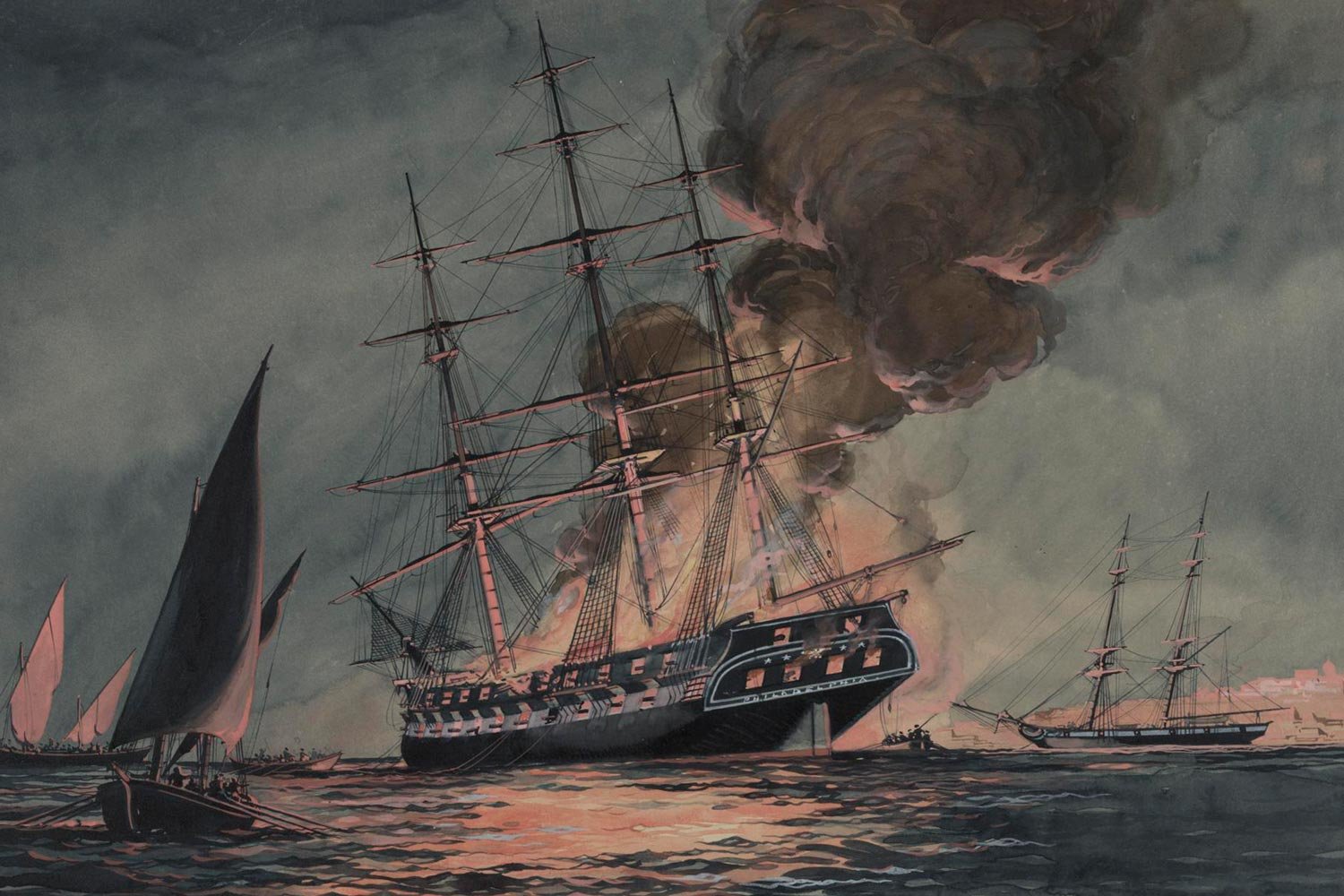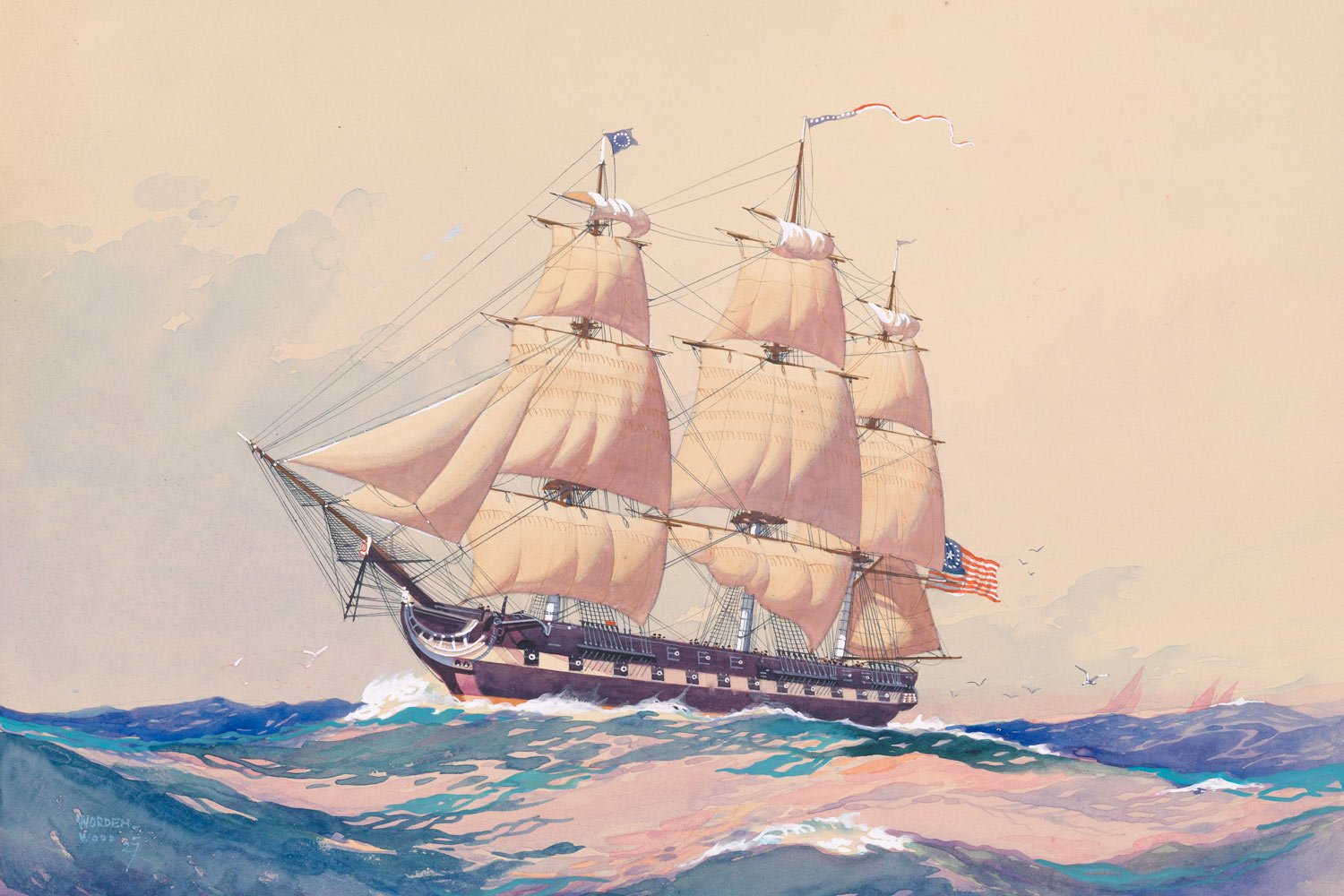Time Runs Out for Americans at Penobscot Bay
The Penobscot Expedition which started so well with the successful assault up the cliffs at Dyce’s Head to the plateau at the top of the Bagaduce Peninsula on July 28, quickly ran out of steam. The main impediment was an inter-service squabble between the army commander, General Solomon Lovell, and his naval counterpart, Commodore Dudley Saltonstall. Showing a reluctance to engage the enemy that seemed to border on cowardice, Saltonstall would be an obstacle that Lovell could not overcome.
With Lovell and 700 men a few hundred yards from the British inside Fort George, the General wanted Saltonstall to destroy the three British ships anchored in the harbor adjacent to the Bagaduce Peninsula. This small flotilla had been perfectly positioned in Bagaduce Harbor by its commander, Captain Henry Mowat, so that its cannons essentially became an extension of the fort’s defenses. While Mowat’s ships were intact, any assault by Lovell’s militiamen on the fort would be costly.
Moreover, Mowat’s ships were placed in such a confined area that it was difficult to bring the bulk of the American ships against them all at one time. This had been proven out the previous day when Saltonstall tried to support Lovell’s initial assault by firing on the British ships. His flagship Warren had been shot up by the superior British gunners and he was unnerved by the destruction to his ship and the casualties among his crew.
John Singlton Copley. “Portrait of Paul Revere.” Wikimedia.
Lovell, now intent on a siege and artillery bombardment rather than a frontal assault, had entrenching tools brought ashore and asked Lieutenant Colonel Paul Revere, the artillery commander, to set up his cannons. Through the hard work and sweat of over 200 soldiers and sailors, by the evening of July 30, the Americans hauled four cannons, including two eighteen pounders, up the steep slopes, set them in place, and commenced firing.
While the men were struggling with the cannons, Lovell was having his own struggle trying to convince Commodore Saltonstall to use the warships the Massachusetts Assembly had entrusted to his command. But Saltonstall had no stomach for a fight and found countless excuses to not move his nineteen warships against the British.
On July 31, after being asked by General Lovell again to engage the enemy, Saltonstall informed Lovell that he could not do so because of “the obstacle” posed by a three gun British shore battery that could fire on passing ships. The shocked Lovell reminded Saltonstall that his ships held 350 cannons and could perhaps handle this tiny battery, but Saltonstall refused.
That night, a little after 2:00am, Lovell sent a contingent of 300 militiamen under General Peleg Wadsworth, his second in command and most capable subordinate, to take out the British position of which Saltonstall was so fearful. The attack was successful and over in an instant, with the Americans capturing or killing twenty-five Redcoats.
However, a few hours later, as the sleepy militiamen were lounging around the redoubt, General McLean counter attacked with fifty handpicked men from his stellar Hamilton’s Regiment. As quickly as they had taken over the position, the startled Massachusetts militiamen raced out of it and headed for their main line. This little debacle convinced General Lovell he needed help, and he sent word back to Boston requesting “at least four hundred” Continentals, but they would not arrive in time.
As the first week of August dragged on, there was no change to the situation in Penobscot Bay, with Commodore Saltonstall still refusing to move against the three British warships and Lovell still not willing to attack Fort George without Saltonstall’s support. The men in the ranks from Massachusetts, as well as many sailors, began to lose heart and nearly one hundred deserted and headed for home.
By now the battle for Fort George had dwindled into a desultory artillery duel, with shots being fired throughout the day by both sides, but with little effect. By comparison, with each passing day, General McLean strengthened the walls of the fort, rendering any future attack more costly to the militiamen.
Unbeknownst to the Americans, they were now in a race against time as back in New York, British naval commander Commodore Sir George Collier, had been informed of the American force moving on Penobscot Bay. On August 3, he sailed north with seven warships, including his flagship Raisonable, a 64-gun ship of the line, five frigates and a smaller sloop. With any luck, he would reach Penobscot Bay in about a week. If the Americans were still inside the bay at that point, they would be trapped with no means of escape.
Lovell continued to put pressure on Fort George and, on August 11 and 12, made sorties intended to isolate the fort by getting between it and Mowat’s nearby supporting ships. The first two attempts were unsuccessful, but third time’s a charm and, on the foggy morning of August 13, nineteen days after arriving in Penobscot Bay, an aggressive attack finally split the British defenses. Within minutes, five American ships weighed anchor and began moving towards Bagaduce Harbor to destroy Mowat’s vessels.
As the afternoon wore on, American hearts lifted and so did the fog. In the distance, an unknown fleet approaching from the south came into view and anxious eyes turned towards it. In response to a signal gun fired from the fort, British ensigns were soon seen fluttering from the main masts. Time had run out for the Americans.
Next week, we will discuss the American disaster in Penobscot Bay. Until then, may your motto be “Ducit Amor Patriae,” love of country leads me.












Commodore Edward Preble assembled his considerable American fleet just outside Tripoli harbor in August 1804, determined to punish the city and its corsairs, and force Yusuf Karamanli, the Dey of Tripoli, to sue for peace.